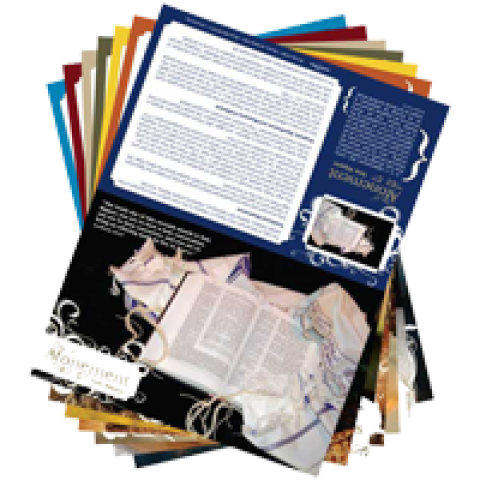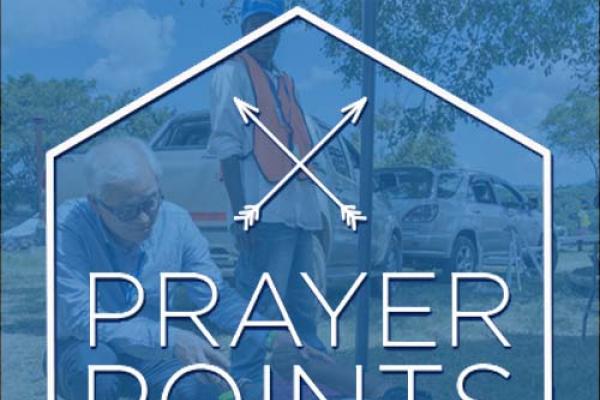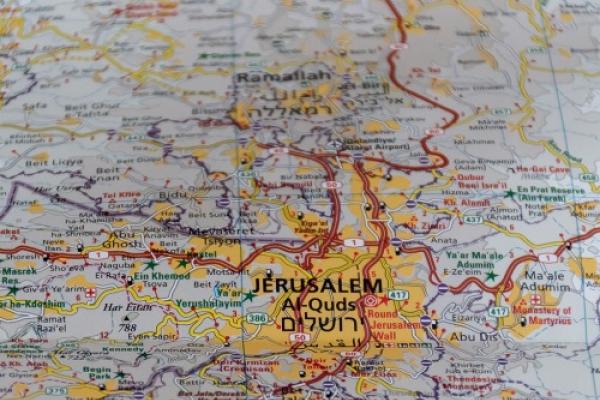Messianic Judaism infuses Judaism with New Covenant faith in Yeshua (Jesus). Messianic Jews have placed their faith in Yeshua as God’s promised Messiah and continue to observe the celebrations, traditions and culture of their Jewish heritage.
If you’re new to Messianic Judaism, you may be unfamiliar with some of the terms commonly used among Messianic Jews. The holidays, in particular, include many customs and Hebrew words you may not recognize. To help you, we’ve created this glossary of some of the key elements pertaining to the Spring Feasts and holidays on the Jewish calendar. We hope it serves as a handy reference to enrich your understanding of Messianic Judaism and the Jewish roots of your faith in Jesus.
Watch for the Fall Feasts and Holidays edition to be posted later in the year.
Chag Sameach! (HKHAG Sa-MAY-akh)
“Chag Sameach!” means “Joyous Holiday” and is a general greeting used for many Jewish holidays.
PURIM
Purim (PURR-ihm) is a festive holiday celebrating God’s deliverance of the Jewish people. The story is found in the book of Esther. The word purim means “lots,” and the holiday is so named because wicked Haman cast lots to determine the day to enact his decree for the citizens of Persia to annihilate the Jewish people. Because God delivered His people and the book of Esther commands rejoicing, Purim is the one of the most joyous holiday of the Jewish year.
gragger (GRAH-gur)
A gragger is a hand-held noisemaker used during Purim plays. Every time the villain Haman is mentioned, the audience stomps their feet, boos and rattles graggers to drown out his name.
hamantashen (HAH-men-TAH-shen)
These triangular, filled cookies are a Purim tradition said to resemble Haman’s hat or ear.
Megillah (Meh-GEE-lah)
A Megillah is a scroll. Five books within the Tanakh (the Hebrew Scriptures) are each referred to as a Megillah: Song of Songs, Ruth, Lamentations, Ecclesiastes and Esther. At Purim, we read the Megillah Esther.
Purim Sameach! (PURR-ihm Sa-MAY-akh)
Use this greeting to wish someone a “Joyous Purim.”
Passover or PESACH (PAY-sakh)
Pesach (Pay-sakh), or Passover, is one day followed by the seven-day Feast of Unleavened Bread. The two holidays have come to be known collectively as Passover. The holiday commemorates God’s deliverance of the Jewish people from 400 years of slavery in Egypt. Messianic Judaism recognizes the picture of Yeshua found in Passover, as the apostle Paul declared that Jesus is our Passover Lamb (2 Corinthians 4:5-8).
Chag Matzot Sameach! (HKHAG MAHT-zote Sa-MAY-akh)
This holiday greeting is used during Passover week and wishes people a “Joyous Unleavened Bread Holiday.”
Chag Pesach Sameach! (HKHAG PAY-sahk Sa-MAY-akh)
To wish someone a “Joyous Passover Holiday,” say “Chag Pesach Sameach.”
Afikomen (AH-fee-KOH-men)
The Afikomen is a half-portion of the middle matzah broken during the Seder meal. The Afikomen is hidden somewhere in the house to be searched for later by the children. The child who finds it “redeems” it for a gift from the Seder leader.
beytzah (BAYT-zah)
The Seder plate includes a beytzah, which is a roasted or hard-boiled egg. It symbolizes the peace provided by the sacrificial Passover lamb as well as a reminder of the destruction of the Temple and burning of Jerusalem in 70 A.D.
chametz (hkhah-METZ)
Chametz is leaven or any food that includes a leavening agent causing dough to rise. This includes grains that have fermented on their own with water. Chametz is forbidden during the Feast of Unleavened Bread. Before Passover, Jewish families search to remove all traces of it from their homes.
charoset (HKHAR-o-set)
Charoset is a sweet mixture of diced fruit – often apples or dates – combined with chopped nuts, spices and wine. It symbolizes the mortar used by the Hebrew slaves in Egypt.
Haggadah (HAH-gah-dah)
The Hebrew word haggadah means “the telling.” The Haggadah is the book or booklet used during the Seder to retell the Passover story.
karpas (KAR-paas)
Karpas are green leafy vegetables used in the Passover Seder to symbolize the new life and God’s bounty that emerges each spring. Before eating the karpas, which is often parsley, participants dip it in a bowl of salty water representing the tears of the Hebrew slaves.
maror (MARE-er)
Maror are bitter herbs, typically represented on the Seder plate by horseradish. They represent the bitterness of life experienced by the Hebrew slaves.
matzah (MAHT-zah)
Matzah is unleavened bread and is eaten during the eight days of Passover.
matzah tosh (MAHT-zah tosh)
A matzah tosh is a three-sectioned pouch in which the ceremonial matzah is kept during the Passover Seder.
matzot (MAHT-zote)
Matzot is the plural of matzah.
Seder (SAY-dur)
The word seder means “order.” The Seder is the ceremonial meal of Passover in which Jewish people commemorate the Exodus with symbolic foods and readings.
z’roah (ze-ROH-ah)
The z’roah is a shank bone from a lamb and is part of the Seder plate. It symbolizes the lamb sacrificed at Passover and its blood painted on the doorposts of the Hebrew slaves’ homes. When the Angel of Death – the 10th plague over Egypt – saw the blood on the doorpost, he would pass over that house, sparing the death of their first born.
BIKKURIM and the Counting of the Omer
Bikkurim (Bee-kour-EEM) is the Feast of Firstfruits occurring the day after the first Shabbat (SHAH-baht) of Passover. It begins the Counting of the Omer for seven Sabbaths until the Feast of Shavuot. Messianic Judaism sees in this Feast a prophetic foreshadow of Jesus in that He rose on Firstfruits. The apostle Paul identifies Him as the firstfruits of the coming resurrection (1 Corinthians 15:20).
Omer (OH-mayr)
An omer is a measure of grain often used in calculating grain offerings presented at the Temple.
Shabbat (Shah-BAHT)
Shabbat is the Hebrew word for Sabbath. It is the seventh day of the week commanded by God to be a day of rest. The term is also used to indicate the practice of ceasing work on a Jewish holiday.
Shabbatot (shah-bah-TOTE)
The plural of Shabbat, Shabbatot indicates multiple Sabbath days.
SHAVUOT
Shavuot (SHAH-voo-ote) means “weeks.” The festival is also called the Feast of Weeks as it follows seven weeks from Firstfruits. Shavuot falls on the 50th day from Bikkurim, and because pente means 50, the holiday is also known as Pentecost. Shavuot celebrates the giving of the Torah at Mount Sinai. Messianic Judaism recognizes the prophetic fulfillment of this Feast in that God gave the Holy Spirit to Believers on Shavuot.
Ruach HaKodesh (ROO-ahk Hah-KOH-desh)
The Holy Spirit is called the Ruach HaKodesh in Hebrew. At Shavuot, Messianic Jews celebrate the gift of God’s Spirit indwelling those who believe in Yeshua.
Pentecost (PENT-eh-cost)
The New Covenant event known as Pentecost occurred on Shavuot. It was at this time that God first gave the Holy Spirit to indwell Believers.
tikkun (TIH-koon)
An all-night event in which Jewish people stay up Shavuot night reading the Torah, selections from the Tanakh, and the book of Ruth. As dawn breaks, they close with reading the Ten Commandments. Many Jewish people spend the night going from tikkun to tikkun held in homes, synagogues, learning institutions, or community centers.
Torah (TOR-ah)
The Torah is the collection of the first five books of the Holy Scriptures, also called the Pentateuch, and is Judaism’s most revered text. It contains the Law given by God through Moses to the Jewish people.
Get the Biblical Feast Tent Cards
Discover the significance of Jewish feasts with these beautifully designed table-top tent cards.













